Hostel People
Not every hostel is social, and even the ones that are have their dead periods. Particularly in January.
That’s why I expected my stay in Amsterdam to be a solitary one, as Florence had been. My hostel, EcoMama, was certainly quiet, yet it seemed designed to encourage conversation. The front of the building is a public cafe which fills with people each morning. Behind it, you’ll find reception, staffed by young people from around the globe. Just a bit further, the space opens into a kitchen and common space, with long dining tables and lounge chairs scattered about and surrounded by books and musical instruments. Near the back, a tent over a large couch faces a wall painted white to use with the projector above.
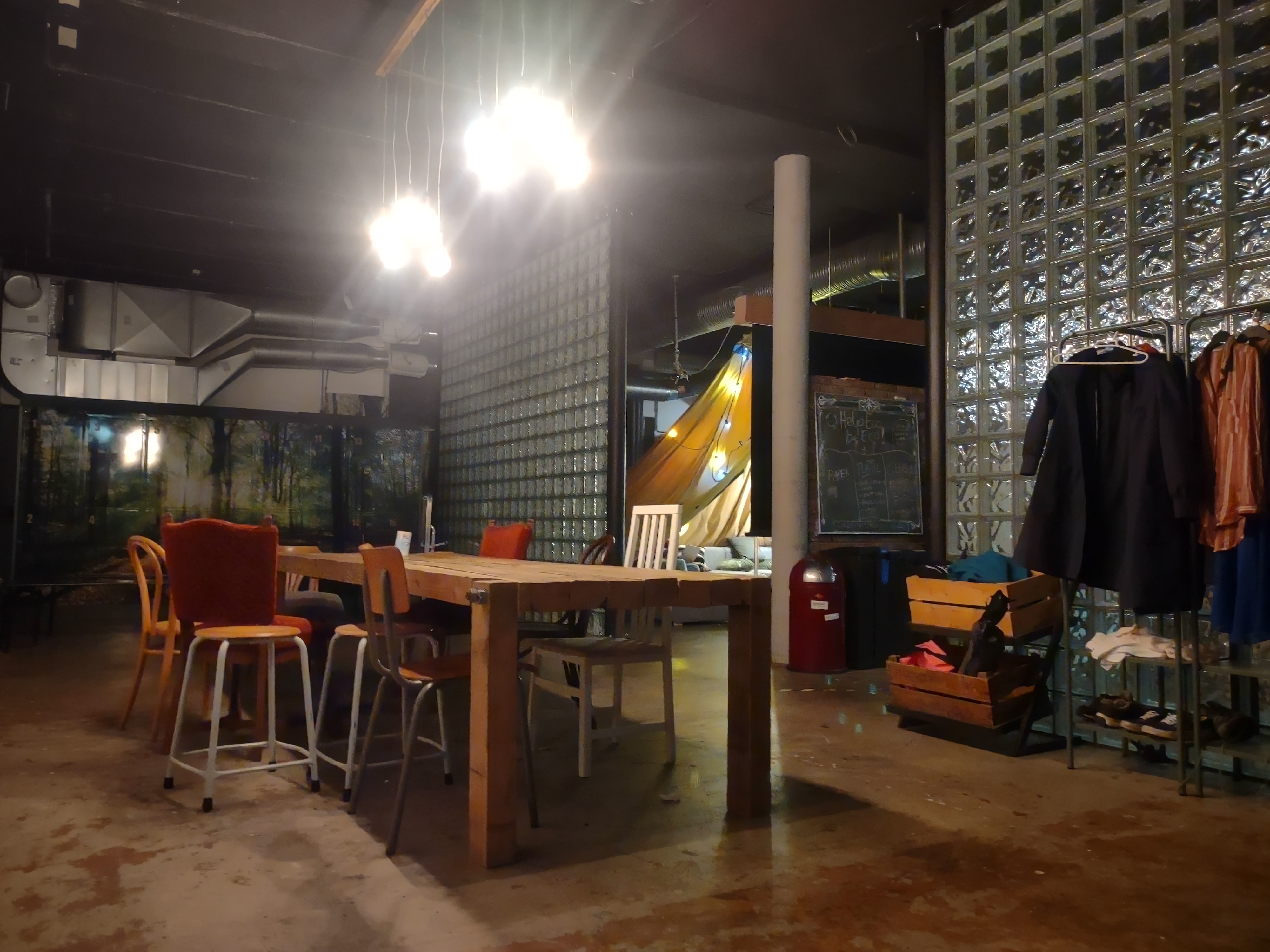
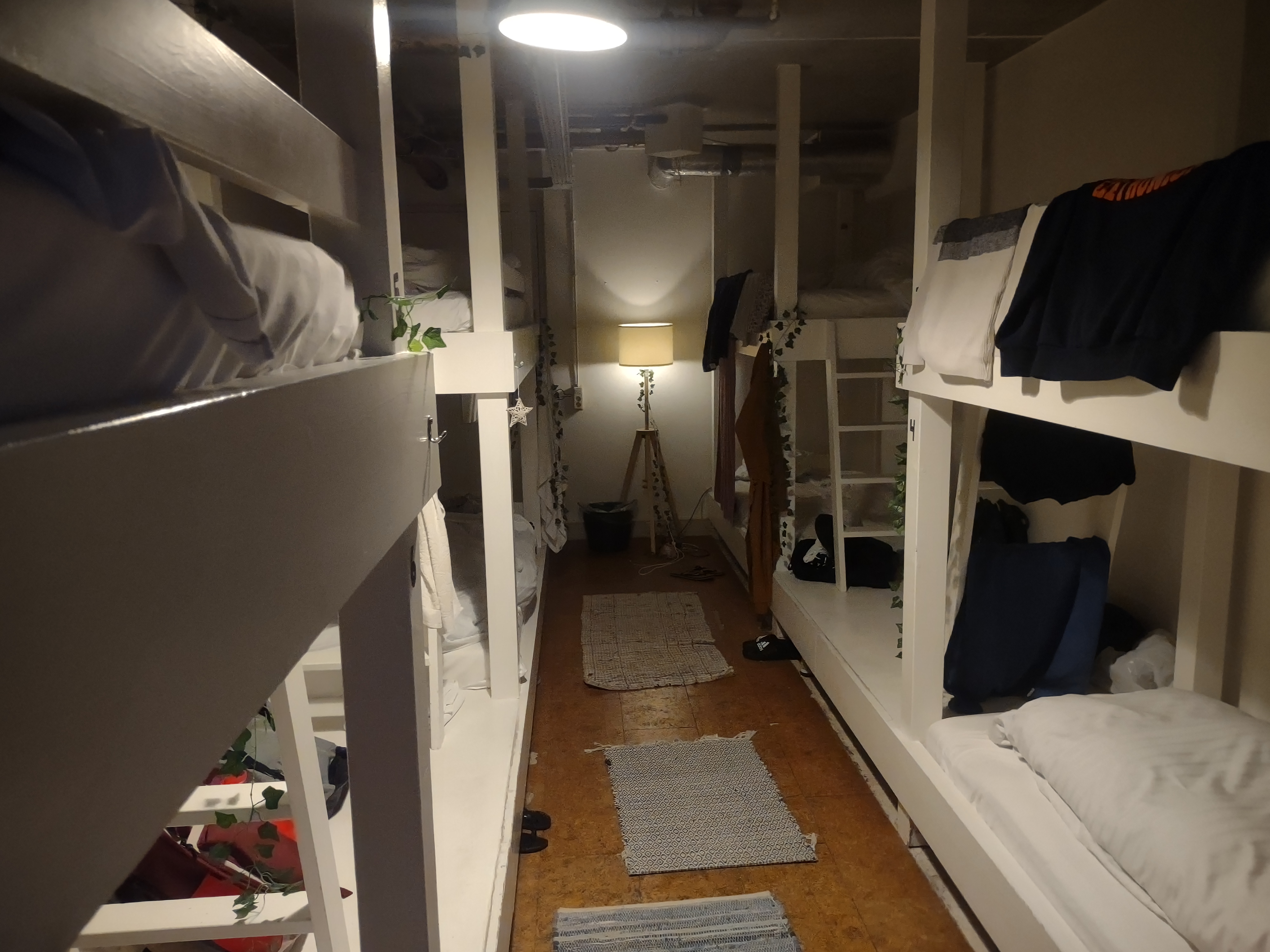
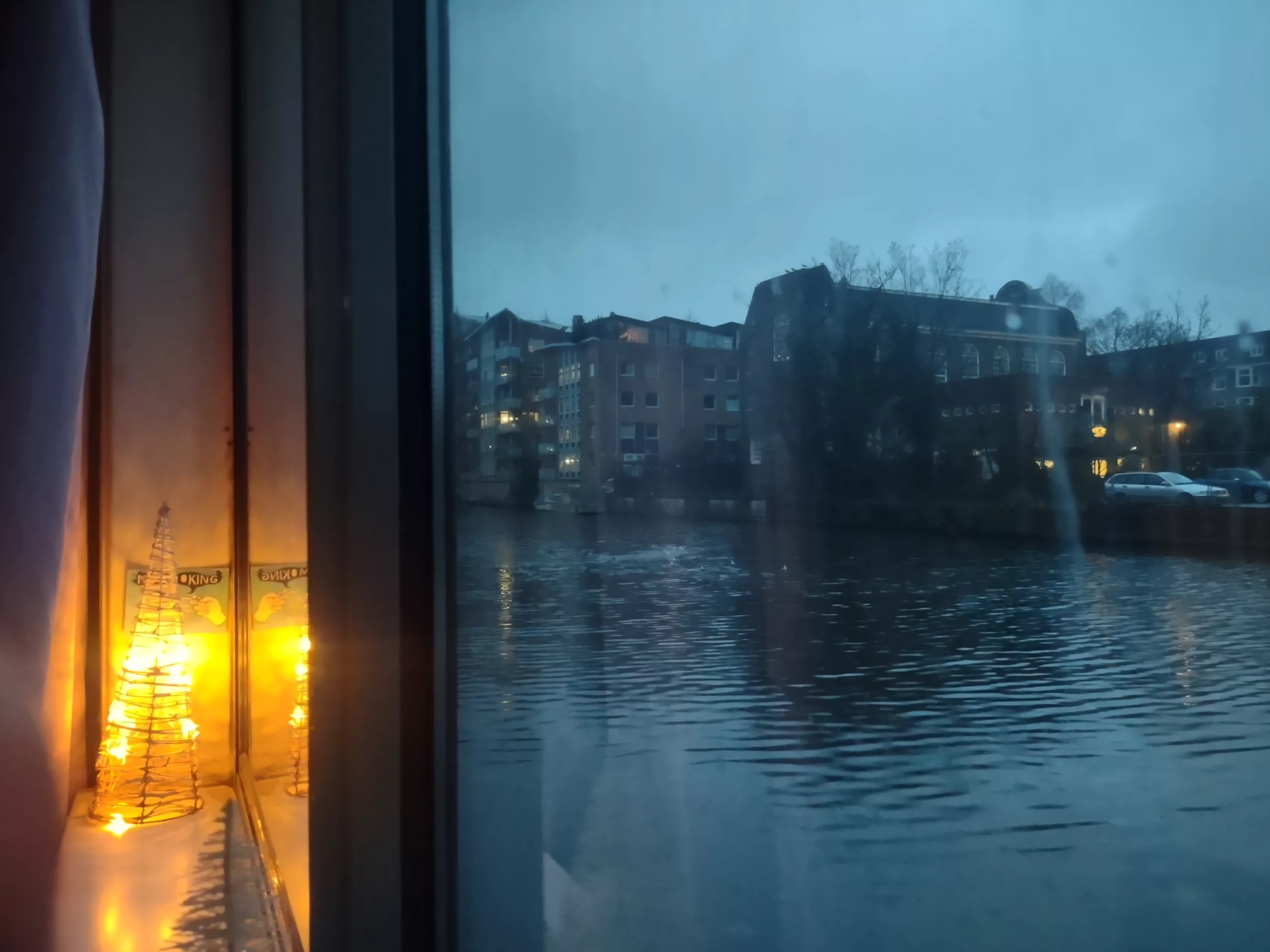
I really connected with one of the staff members—a woman from Slovakia and Florence funnily enough! We chatted a lot that evening, and I later met a lady from Bristol while cooking in the kitchen. We went for drinks at a bar down the street, chatted about her career as a choir instructor and the woes of online dating, then followed it up with fries from a nearby kebab place.
The connections I made in Amsterdam made weren’t like the ones in Rovaniemi or Helsinki, where I spent the entirety of my days among new acquaintances. Instead, I’d wander off and do my own thing through the day, but always were lovely to return to in the evenings after wandering the city for hours.
The City and Urbanism
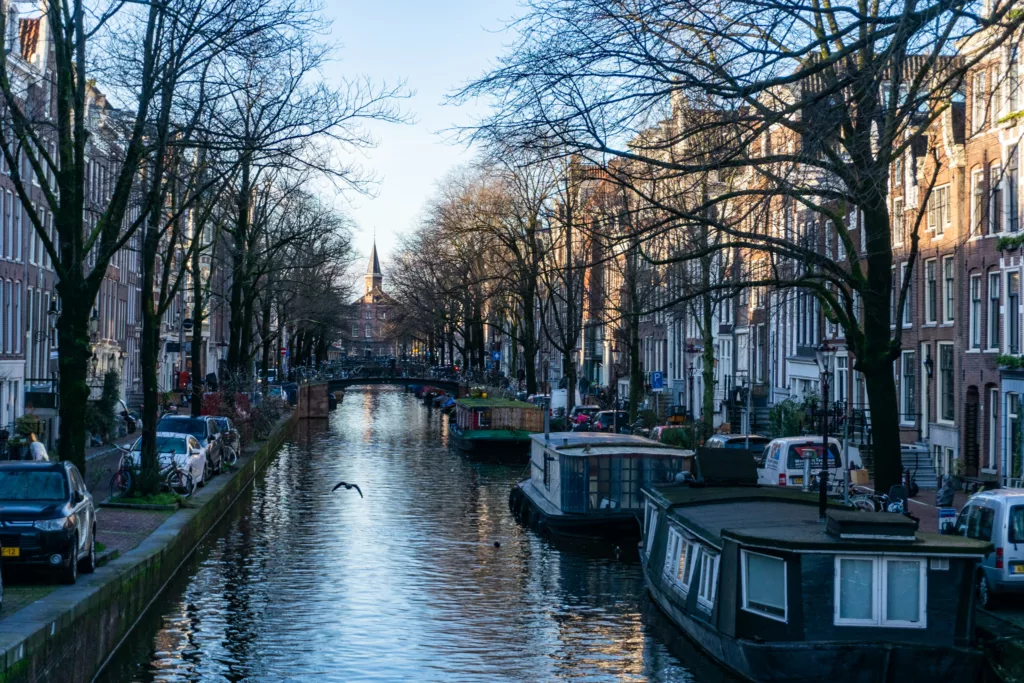
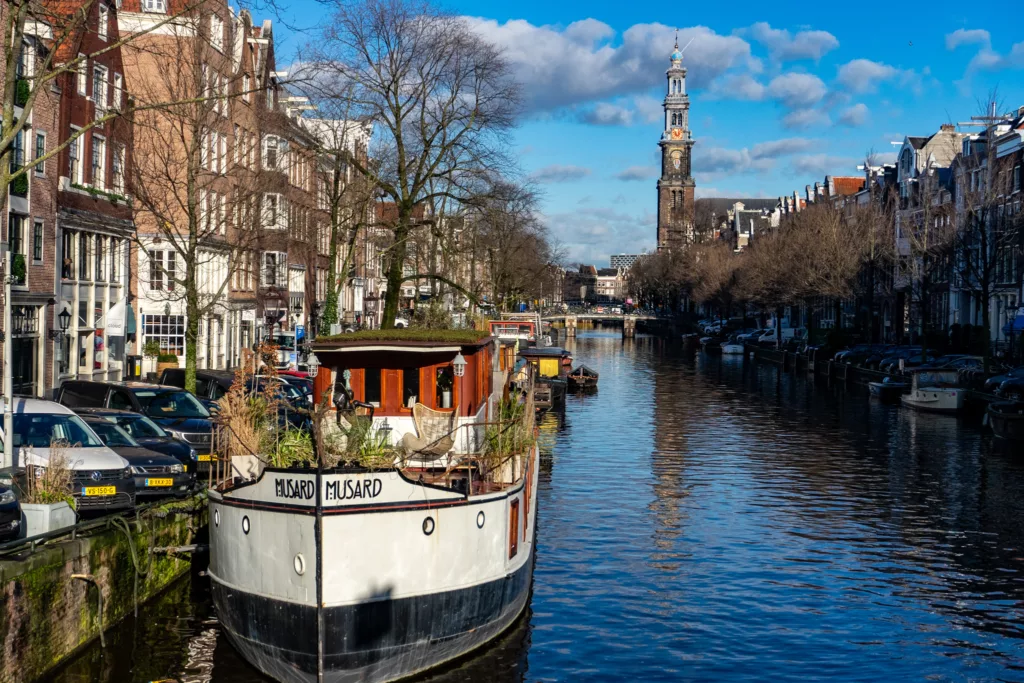
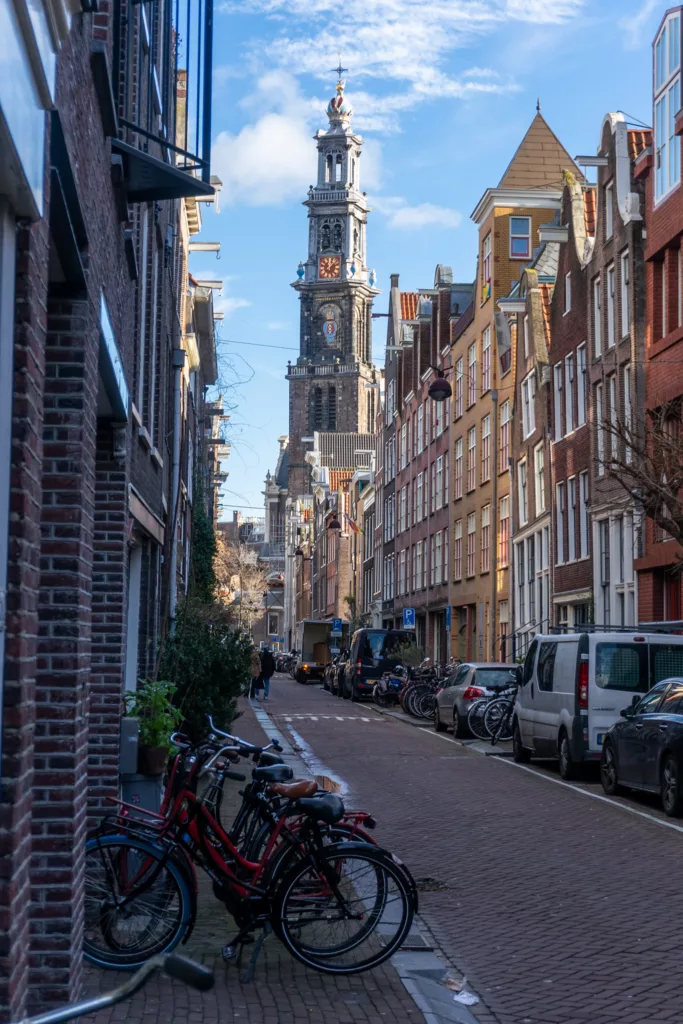
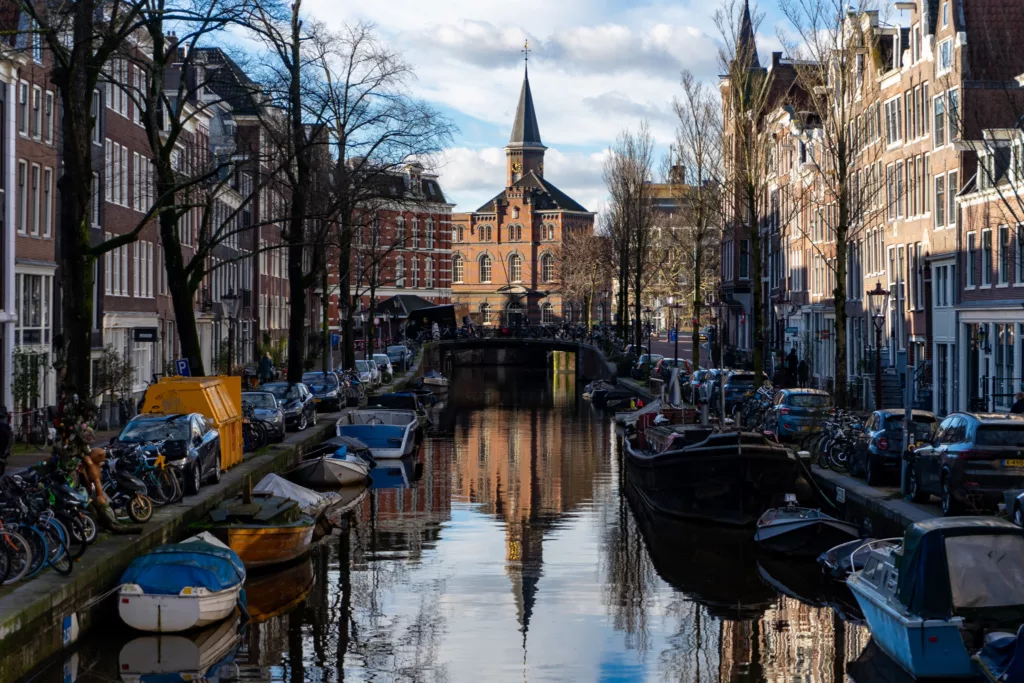
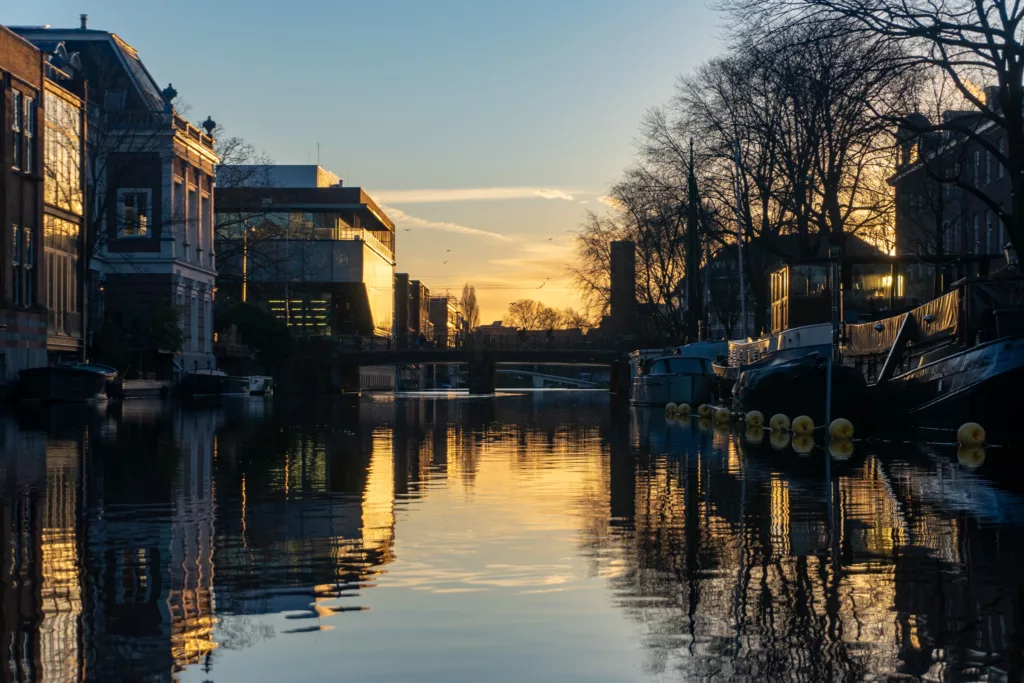
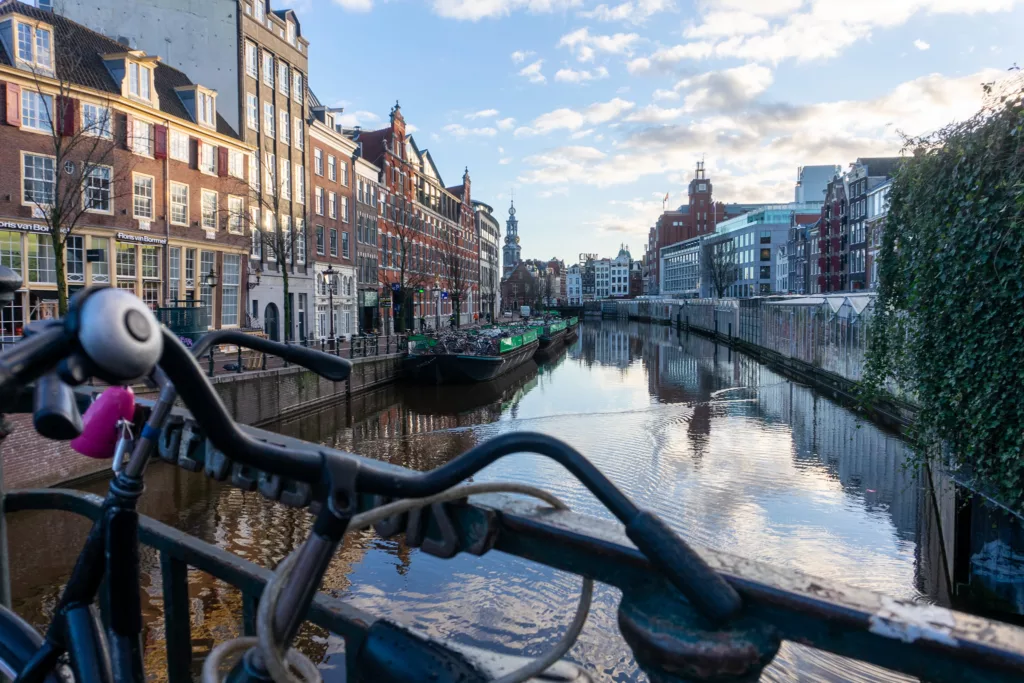
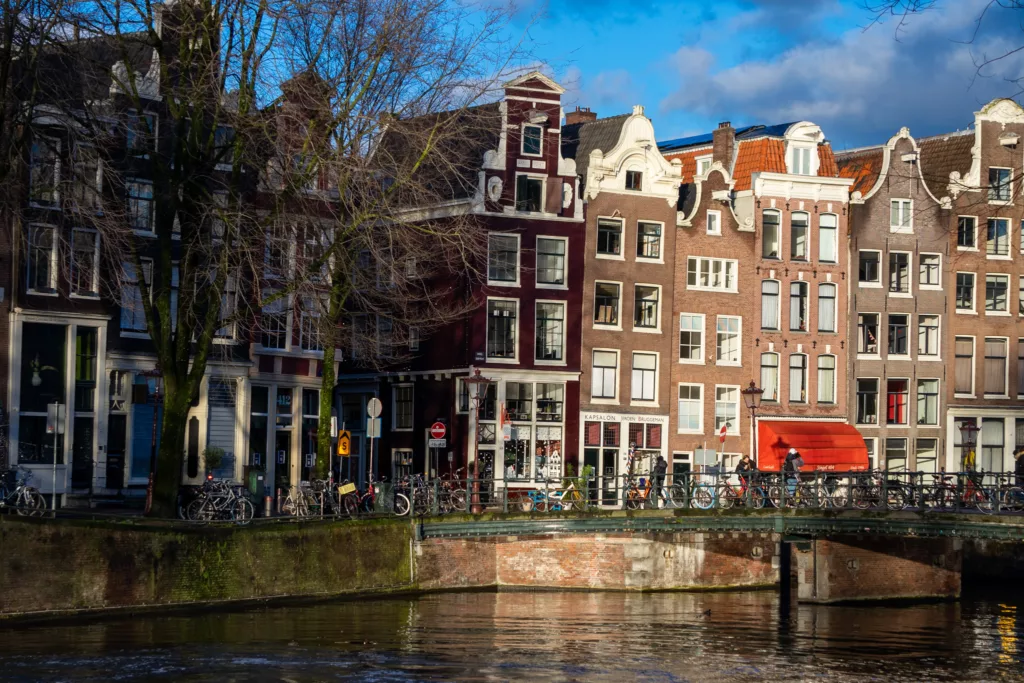
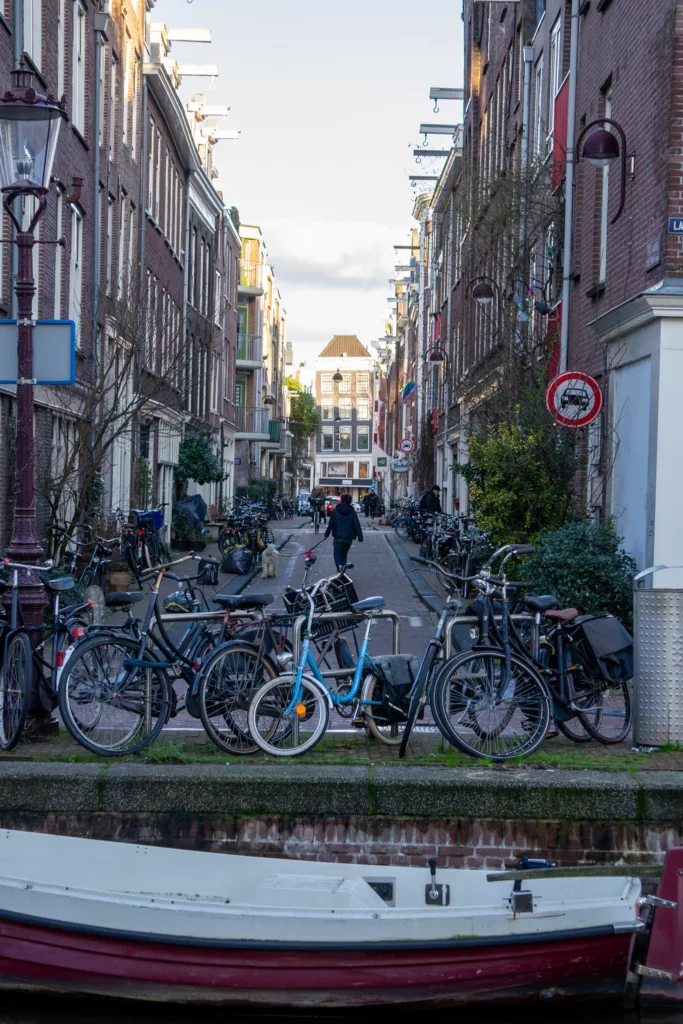
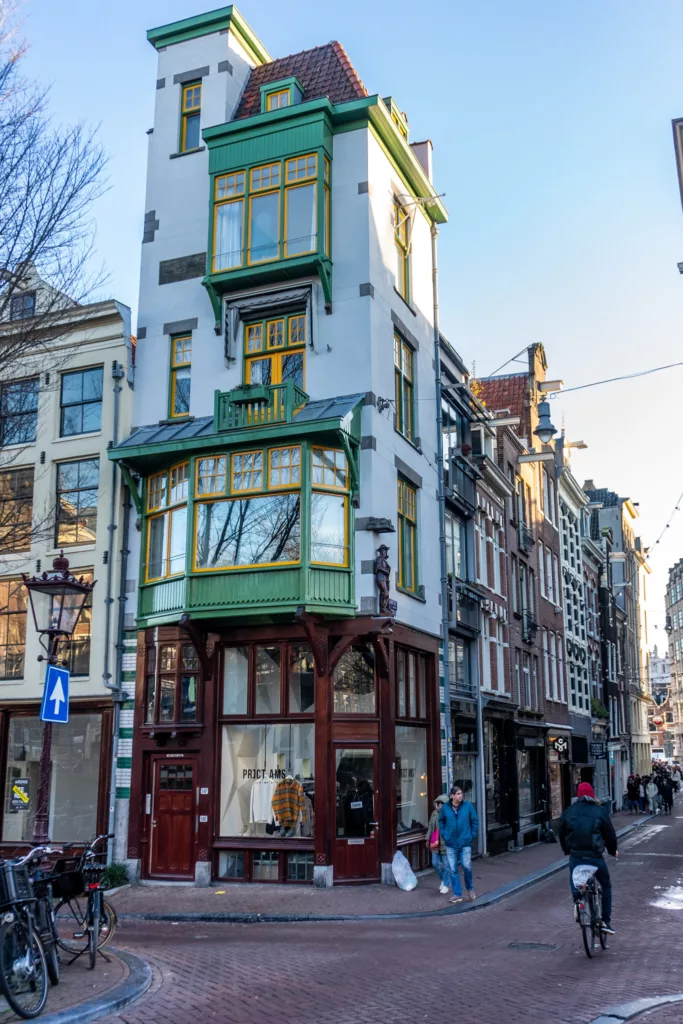
Amsterdam is not a big city, at least not by North American standards. However, despite a still sizable population of 800,000, the city somehow feels infinitely smaller than it actually is. Just a few minute walk from the busy, touristy city center, you can find yourself on quaint and calm streets. I remember standing in the middle of a one lane street without a single car in sight. It was lined with two sidewalks, each wider than the street itself. Tall and narrow apartments stretched up a few stories on either side, and just down the way there was a school with a small yard out front and large windows that framed kids playing a game in an upper-story classroom. Bikes were locked neatly along the school’s fence, and onto anything they could be latched to down the entire street.
It was quiet there. No highway roar or honking horns, just people walking, biking and the occasional trundling sound of a nearby tram. Not to say there aren’t busy parts of the city. The farther you get out of the historic city the wider the streets get and the more traffic you’ll find. But even beyond those old canals and historic merchants houses, the city is still far denser, more walk-able, and more deeply designed for people than most of the rest of the world.
That is exactly why Amsterdam is something of a pilgrimage site for urbanists, and as a pretty big design geek, I’m glad I got to see it. I spent much of my time in the city just walking along canals and down tempting side streets. It was cold and occasionally a little rainy, but that didn’t make the city any less fascinating to explore.
In all my urbanist fervor, however, I felt it would have been rather shameful if I didn’t use any of Amsterdam’s iconic cycling infrastructure.
Cycling
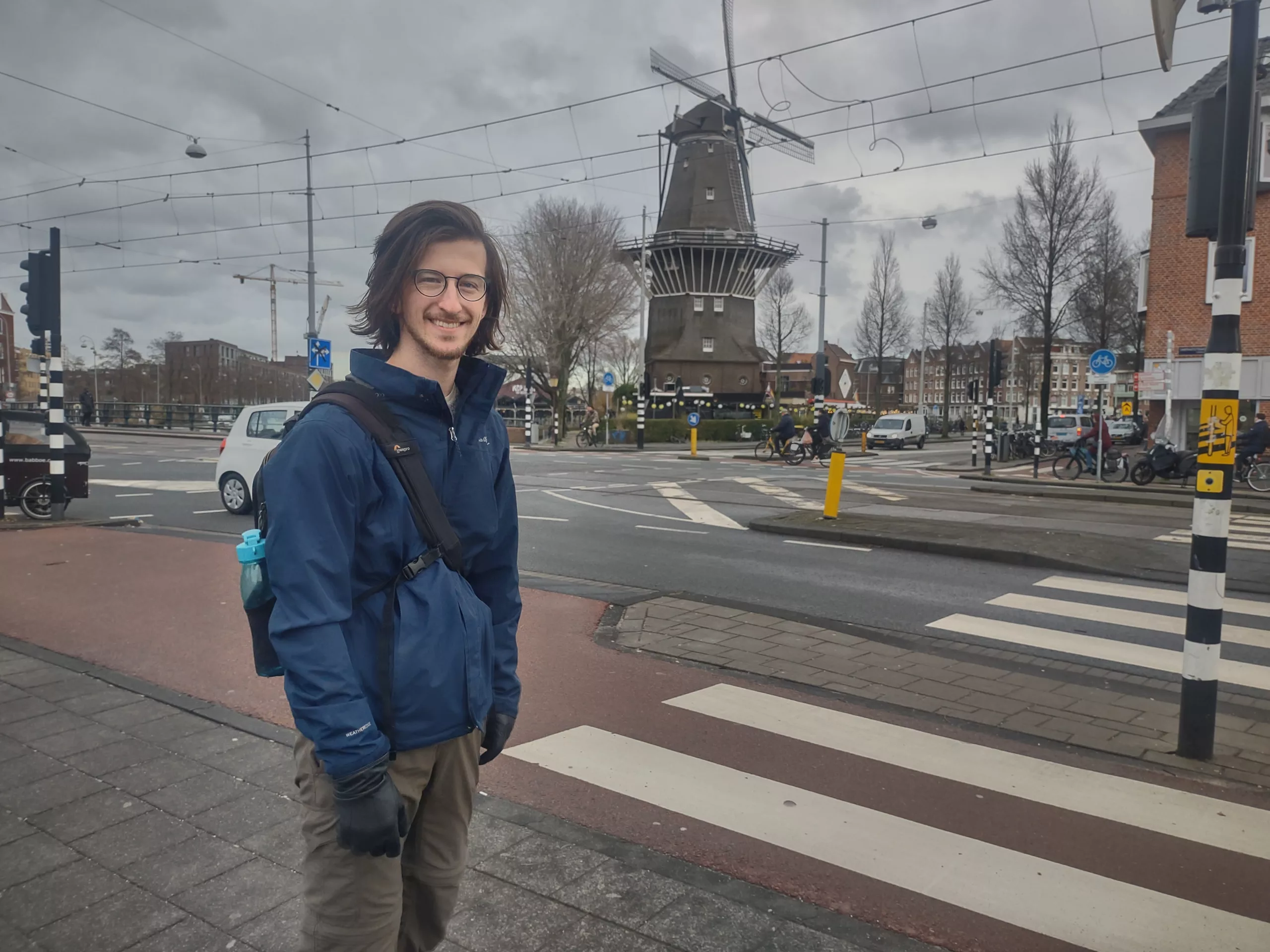
I signed up online for a bike tour of the city, showed up at a tiny cycle repair shop and met my guide. By which I mean, MY guide. Apparently I was the only person to have signed up for the tour. The guide, to his credit, still ran it for me anyway.
It was comforting (though hard to keep up) biking with a local. By local, I mean a Russian filmmaker who spent most of his life living in the US before emigrating to lead a more relaxed lifestyle in Amsterdam.
There were definitely perks to a private tour. We spent less time at individual stops, so he added more sites to the list and he ended up taking me to see his neighborhood and the park where he walks with his dog. He pointed out restaurants and local hang outs, and even gave me tips on pursuing film in Europe.
It was a shame the bike ride was one of the last activities I had time for in Amsterdam, as I was leaving for the ferry to Newcastle the next morning. This trip won’t be my last time in Amsterdam, however, and in any case there are still a few more things to mention.
Museums
It wasn’t that I didn’t appreciate the importance of her story, but I initially viewed the Anne Frank house as not much more than an obligation when visiting Amsterdam. I thought it would be overly touristy and, because of that, a shallow rendition of the story it was trying to tell. Touristy it certainly was, but I was blown away by how phenomenal the story telling was. The museum guides you through what is now an essentially empty house, but it employs the few artifacts left behind, the quotes from Anne’s diary and bit s of historical context to great effect. The story is told in such a way that you find yourself invested in the story’s arc, hoping it will somehow end differently than you already know it does.
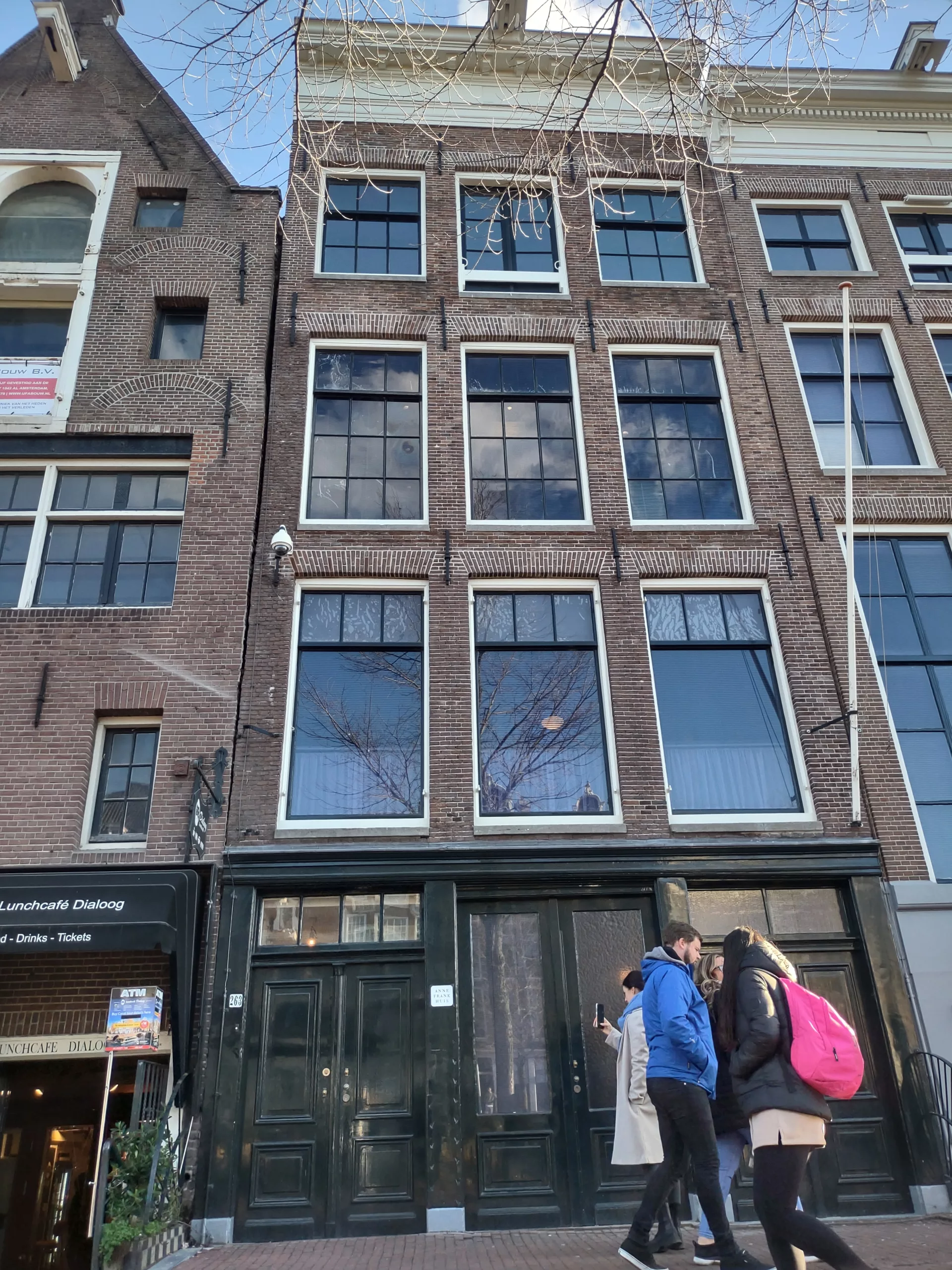
The first third of the visit in a modern building just adjacent to the original house. There you learn about the family and their lives before the war, growing closer to them as you enter the house. By the time you find yourself in the annex in which they sheltered, a sense of dread begins to seep in. As you leave the annex, you learn about their fates after they were discovered: the family that was torn apart, the father who lived to see his all his loved ones die, and about the young girl who wanted to be a journalist, to change the world, yet only left dreams and a few diaries behind.
I cried at the Anne Frank House, even when I hadn’t cried in Auschwitz. I think that is evidence of the power of a story. It’s easy to disassociate when presented with the immense tragedy of a concentration camp—faceless in the scope of its terror—but it’s much harder to look away from one girl whose voice you can so clearly hear.
I meant that last sentence figuratively, but it does remind me of the last exhibits in the museum. In a little multimedia theater there played, among other things, the series of videos of which this is the first episode:
NOTE: I have been made aware that the above link does not function in the USA. Unfortunately, the USA still recognizes an old publisher’s copyright on the diary and that restricts them from publishing the series stateside. You can, however, check out the rest of the channel here and view their other content.
After the Anne Frank museum, I visited the Rijksmuseum which is dedicated to Dutch art and history. The museum’s collections are too broad to deeply be described, and I totally gave up on taking photos, but the collections can be explored online at this link.
I was debating whether I should go to the Rijksmuseum or the Van Gogh museum. I really like Van Gogh, his work and all of the works from adjacent impressionists… however, I also wanted to get a sense of Dutch art as a whole, for which the Rijksmuseum was better suited. Plus, they had a couple Van Goghs of their own.
Signed,
Andrew
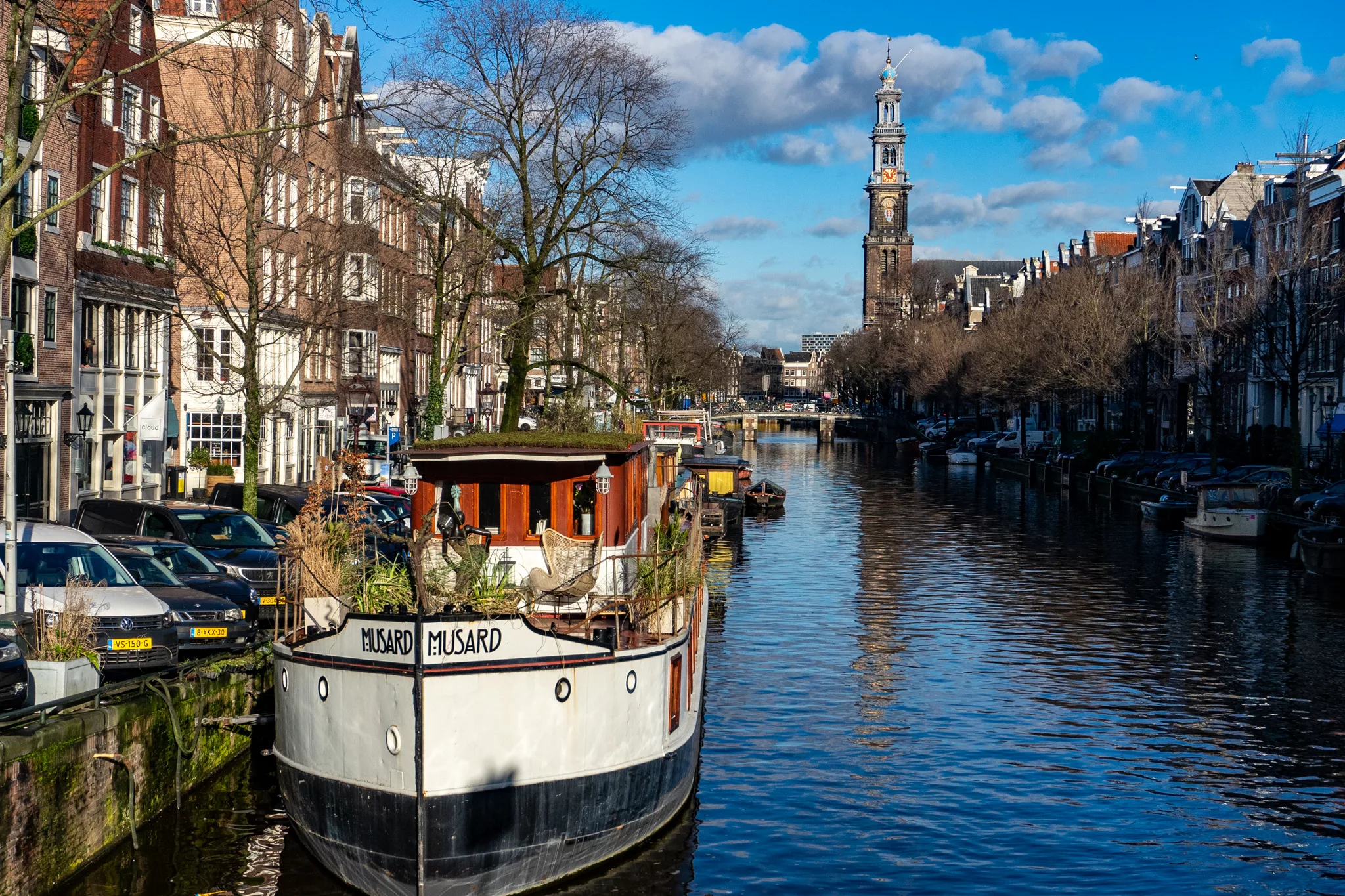
Totally awesome! I am so proud of you Andrew! Wish I was there with you.